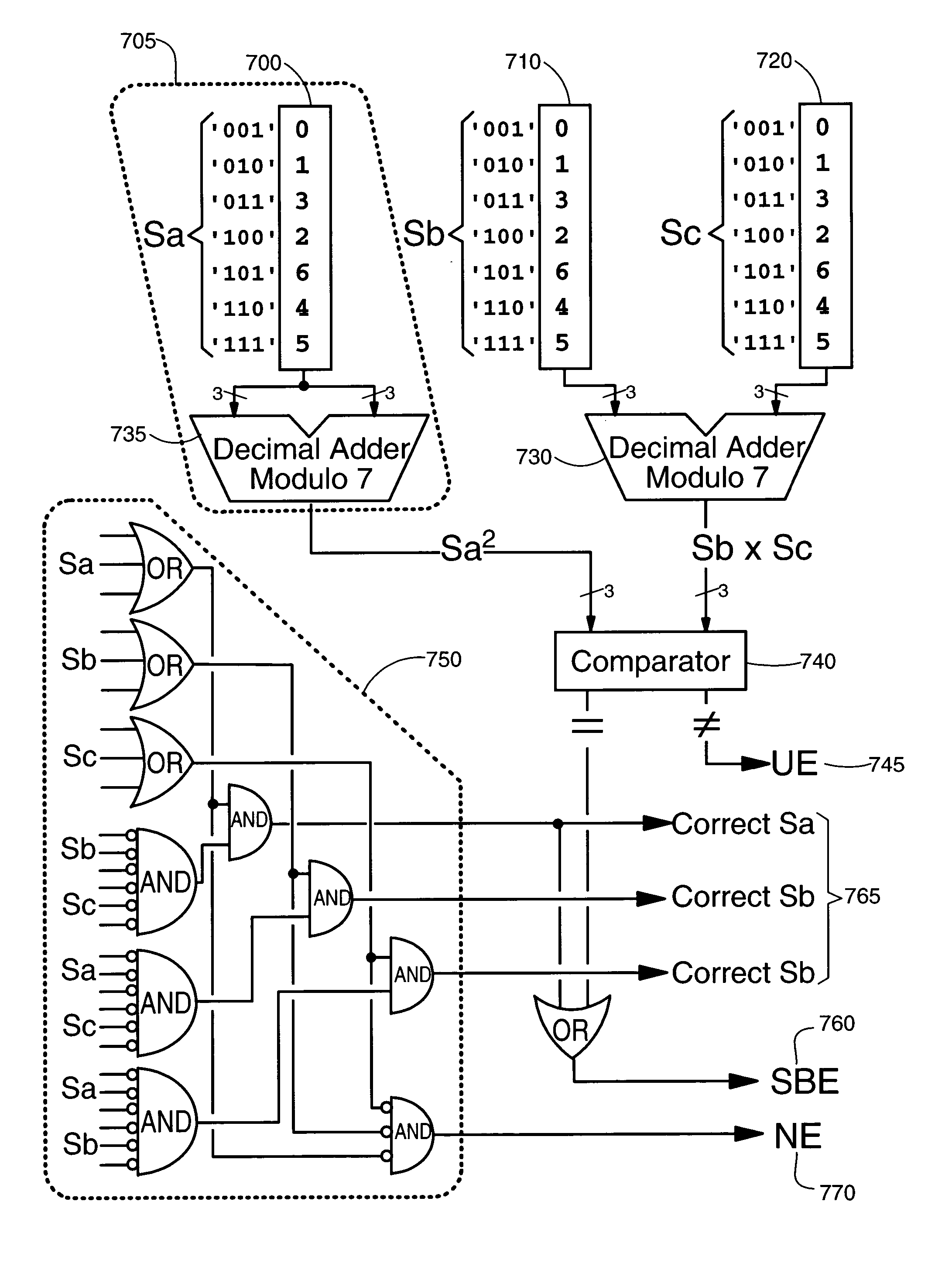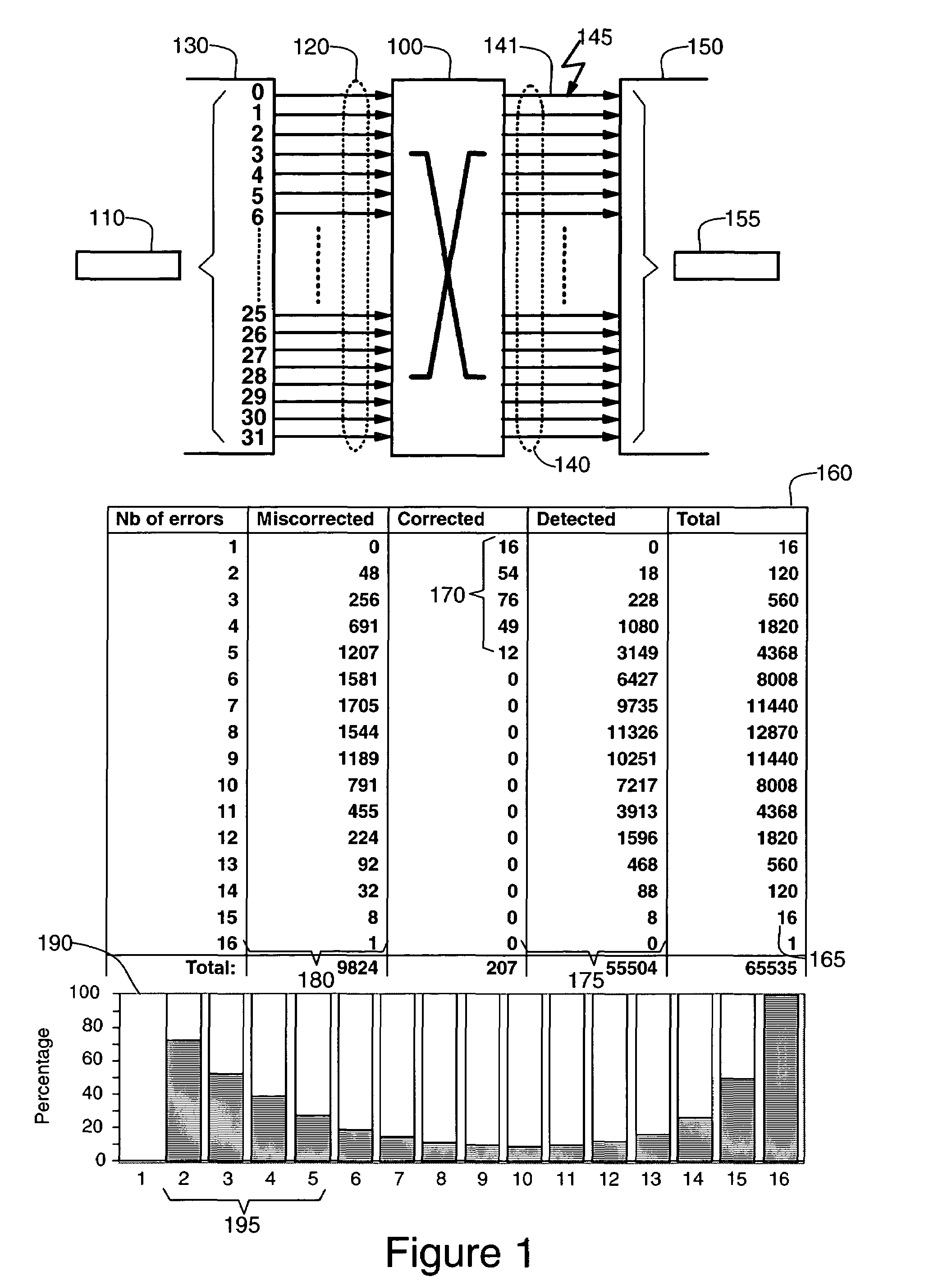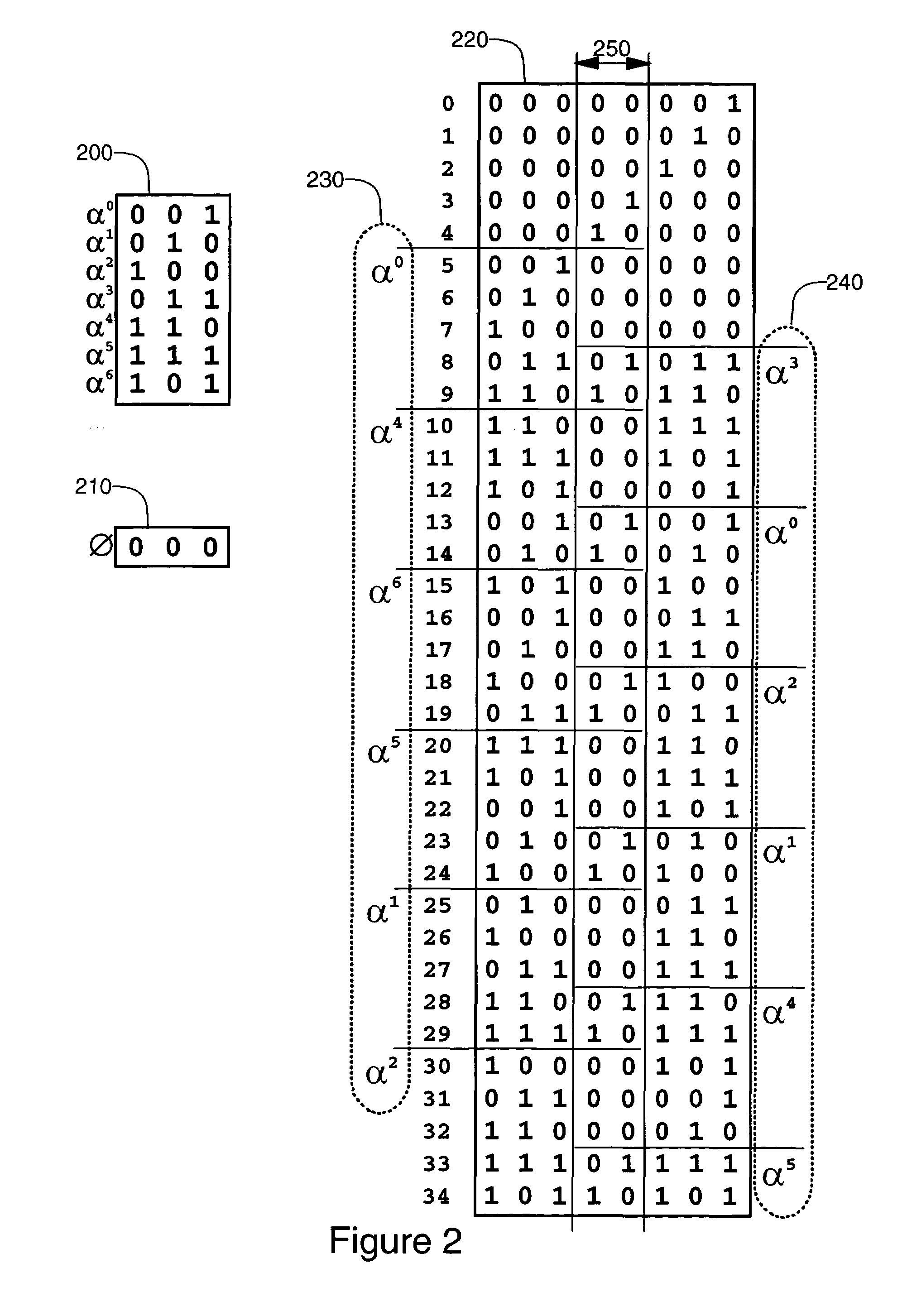Single-burst-correction / double-burst-detection error code
a single-burst correction and error code technology, applied in the field of error correction codes, can solve the problems of high probability of error occurrence, possible 8-nm error, clearly unacceptable, etc., and achieve the effect of improving decoding performan
- Summary
- Abstract
- Description
- Claims
- Application Information
AI Technical Summary
Benefits of technology
Problems solved by technology
Method used
Image
Examples
Embodiment Construction
[0028]FIG. 1 illustrates (110–155) one example of environment where the encoding and decoding methods of the invention can be used, namely in high speed communication equipment wherein the data packets are 8B / 10B encoded when moved between ASICs.
[0029]In the preferred embodiment, in a communications switch and router equipment of a Tbps class (100), each packet (110) must be transported in general on multiple high-speed (i.e., multi-Gbps) links in order to be able to reach the specified level of performance. As an example, if switch ports must comply with OC-768c (40 Gbps) line speed as many as 32 links IN (120) and OUT (140) may have to be used per port adapter (130, 150). OC-768c and other such rates are part of a family of standard rates and formats available for use in optical interfaces, generally referred to as SONET, which is also, like here above 8B / 10B code, a standard defined by ANSI. Each individual link e.g., (141) is thus, in this example, a 8B / 10B coded 2.5 Gbps serial...
PUM
 Login to View More
Login to View More Abstract
Description
Claims
Application Information
 Login to View More
Login to View More - R&D
- Intellectual Property
- Life Sciences
- Materials
- Tech Scout
- Unparalleled Data Quality
- Higher Quality Content
- 60% Fewer Hallucinations
Browse by: Latest US Patents, China's latest patents, Technical Efficacy Thesaurus, Application Domain, Technology Topic, Popular Technical Reports.
© 2025 PatSnap. All rights reserved.Legal|Privacy policy|Modern Slavery Act Transparency Statement|Sitemap|About US| Contact US: help@patsnap.com



